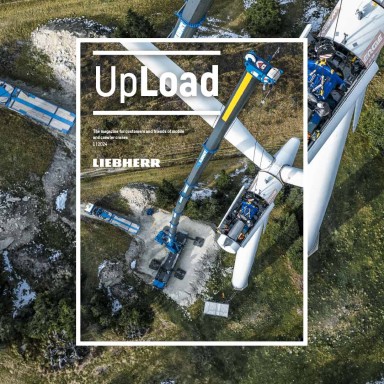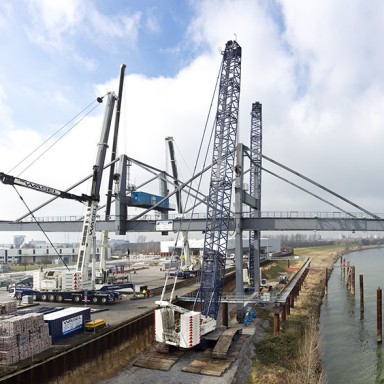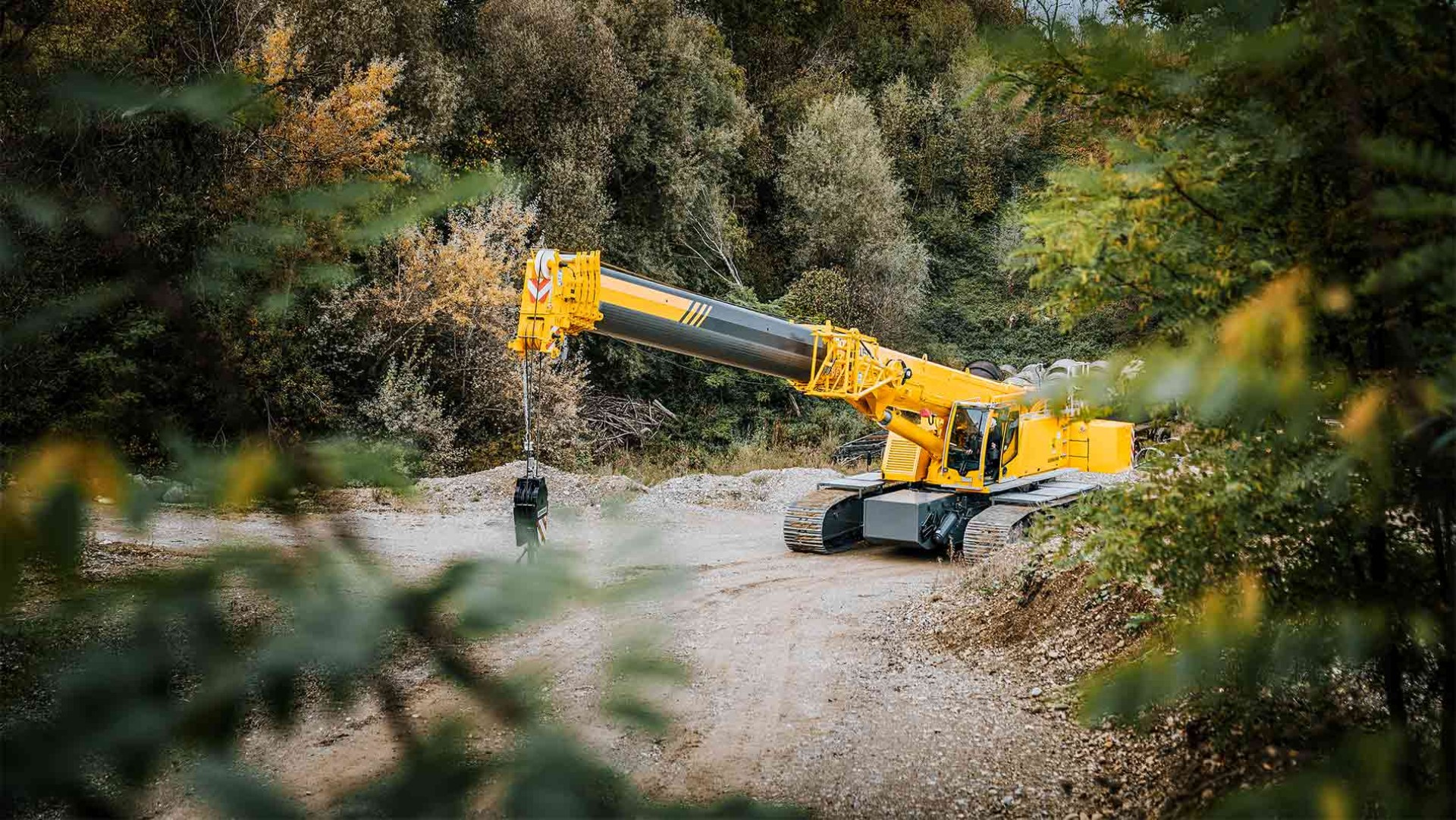
5 minutes - magazine 01 | 2024
Compact and strong, transport in one
With the new LTR 1150, Liebherr has developed a telescopic crawler crane in a class of its own.
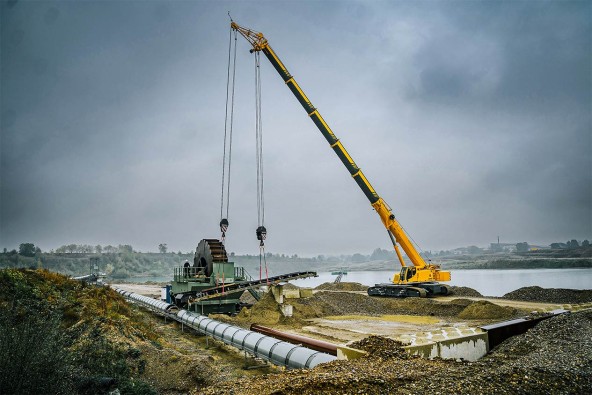
A new addition to the telescopic crawler crane range: the LTR 1150
The third generation of the LICCON control system, plus a modern crane design and a bundle of innovations. These are the visual and technical highlights of the pioneering machine. And there is something else new about the LTM 1110-5.2: For the first time, the ten machines in the pre-series of this crane type are being monitored daily by our test department using telemetry. This helps us to respond quickly and purposefully in the event of any problems. Enormous heat and icy cold are also parameters that we have to take into account when designing and configuring our high-tech cranes. Extreme temperatures can otherwise lead to difficulties or even erroneous error messages. That is why we are monitoring an LTM 1110-5.2 in Sicily, where it works in summer at temperatures of over 40 degrees Celsius. Its counterpart has been rolling through the fjord landscapes of Norway to its construction sites since November. We watched our “cool unit” at work in November as winter set in. On site as well as from our plant in Ehingen.
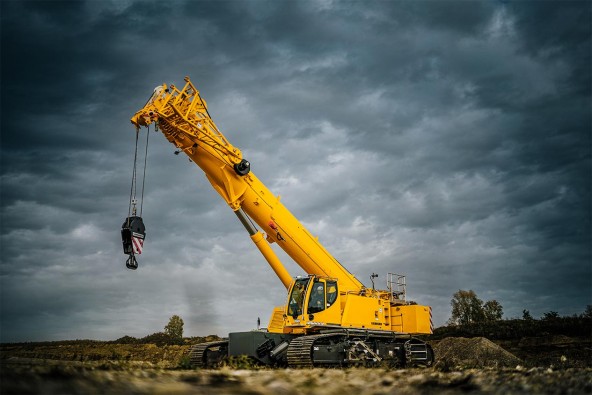
The weather is no problem for the new crane. It feels at home in any weather and on any terrain. Patrik Braig sits at the control levers of the crawler crane. This is his profession, this is where he feels at home. He is familiar with every button and gear lever. He has been working at Liebherr in Ehingen for almost 20 years. He is an expert in telescopic crawler cranes at his workplace in the crane acceptance department. He knows the applications for which these cranes are used. He is familiar with the advantages and development of the Liebherr crane series and is delighted with the latest addition: “I have often heard from crane operators that the LTR 1100 is a little too weak for many applications, while the LTR 1220 is too large and oversized. Until now, the market has lacked a good telescopic crawler crane in the 150-tonne class.”
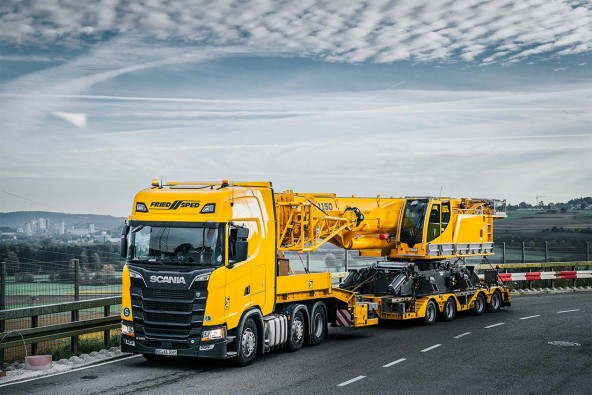
Transport miracle with power and finesse
With the new LTR 1150, Liebherr has developed a telescopic crawler crane in a class of its own – in many respects: With a maximum load capacity of 150 tonnes, it is positioned exactly between the LTR 1100 and the LTR 1220. And although the new crane offers around 50 percent more lifting capacity than the LTR 1100, it can be transported just as easily and economically as its 100-tonne sibling. “We transport the LTR 1150 complete with crawler carriers with a total weight of 60 tonnes and a width of just 3.5 metres or optionally without crawler carriers with a total weight of just 38 tonnes. This is a unique selling point of the new crane and a huge advantage,” explains Patrik and continues: “For smaller transport weights and sizes, the crane can be dismantled quickly and easily. We have developed a new automatic support system for this purpose. This makes supporting on the necessary jack-up cylinders even easier and safer. The crane then dismantles the crawlers itself.” The two crawler carriers, each weighing 11 tonnes, can then be transported together on a standard semi-trailer with a width of 2.55 metres, while the basic machine is only 38 tonnes and 3.0 metres wide.
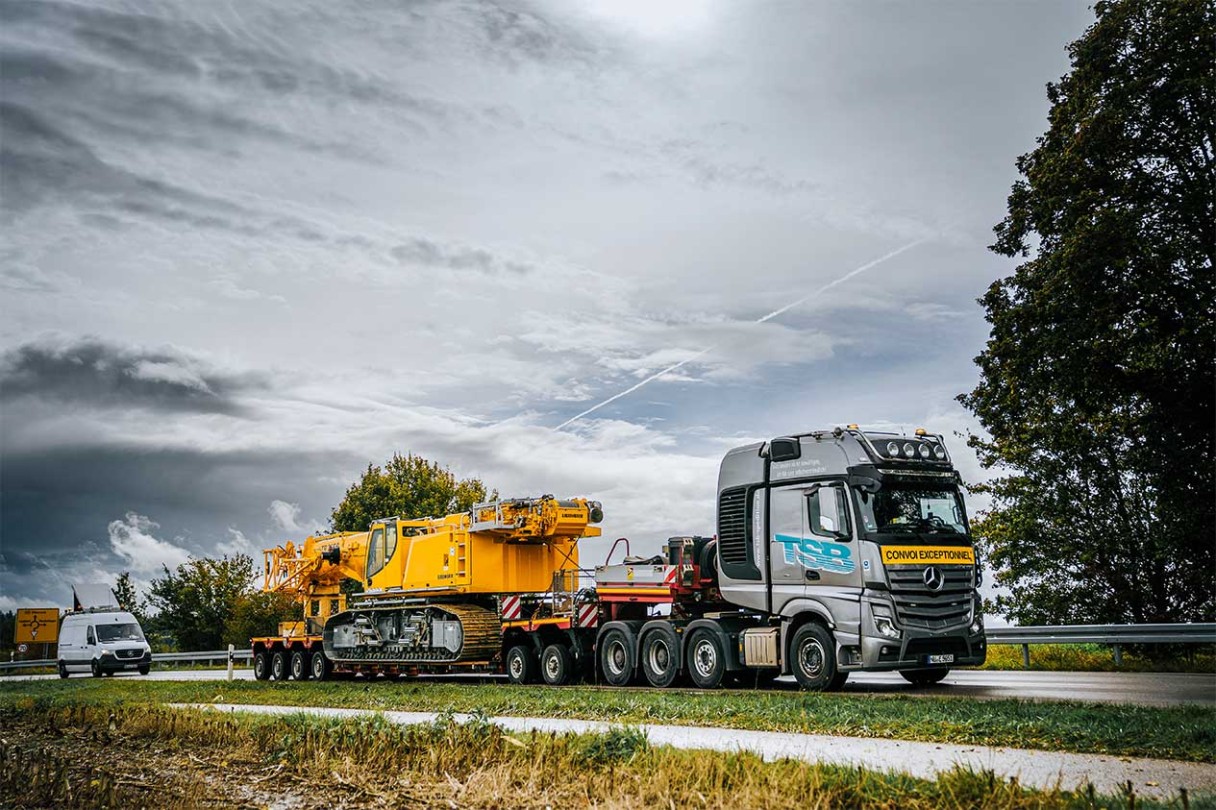
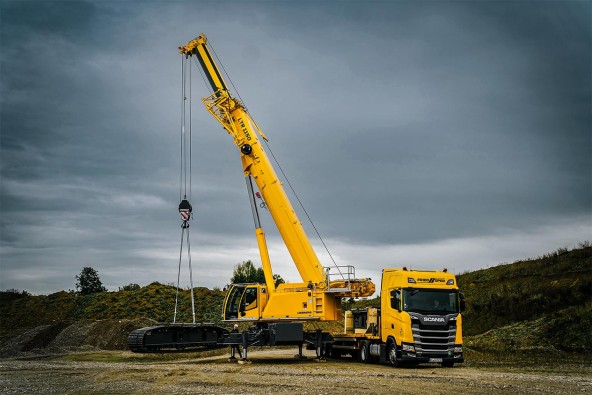
Coherent overall concept
“I was already familiar with VarioBase® from some of the LTM cranes I have tested. The system is impressive, and I would never have thought at first that we could integrate it into a telescopic crawler crane in a similar way,” Patrik recalls. However, our colleagues in the control department have done a great job and developed a VarioBase® system for the new LTR: Depending on the fixed track width and the variable angle of rotation, the best possible load capacity is determined in real time. The greatest loadbearing advantages are achieved with lifts over the track corners, especially with reduced track widths. “I now also have VarioBase® on ‘my’ crane and it’s really fun to work with it.
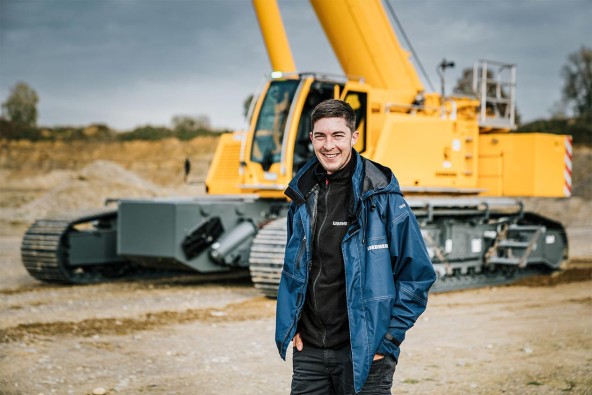
Patrik Braig - Crane acceptance
An additional advantage of the LTR is that you can also move with full load at the hook. Accordingly, the heavier load that we can lift over the corners can also be moved. A great thing!” You can really see Patrik’s enthusiasm. VarioBase® is available for the maximum track width of 5.8 metres, the reduced width of 5.0 metres and the narrow track of 3.5 metres. Thanks to the pick & carry option, the new LTR 1150 can be used perfectly as an auxiliary crane for the assembly of wind turbines as well as in the construction industry, for example, where many lifts have to be carried out in different places.
The best of the LTR 1100 and LTR 1220 has been packed into one crane. Working with the LTR 1150 is fun, it is compact, strong and easy to set up.
Patrik is very familiar with practical functionalities from his day-to-day work: Which handles and functions are helpful for ensuring safe and comfortable work, which work processes make sense, how do the activities go best by hand? He will now put the prototype through its paces and use his experience and practical expertise to put the finishing touches to the 150-tonne crawler.
This article was published in the UpLoad magazine 01 | 2024.

